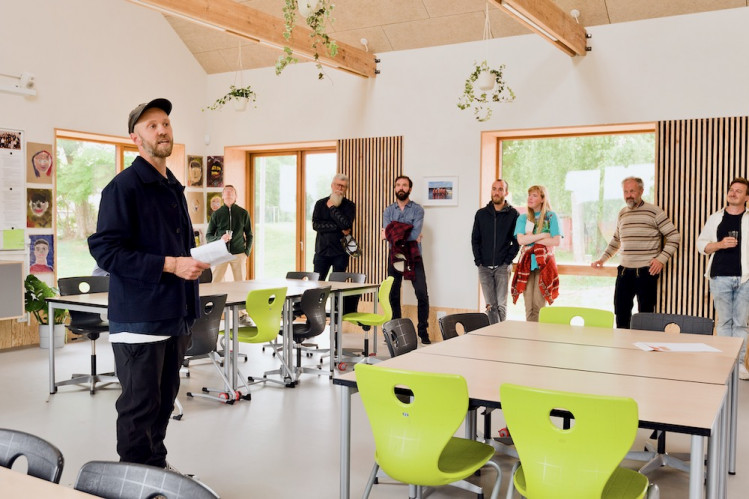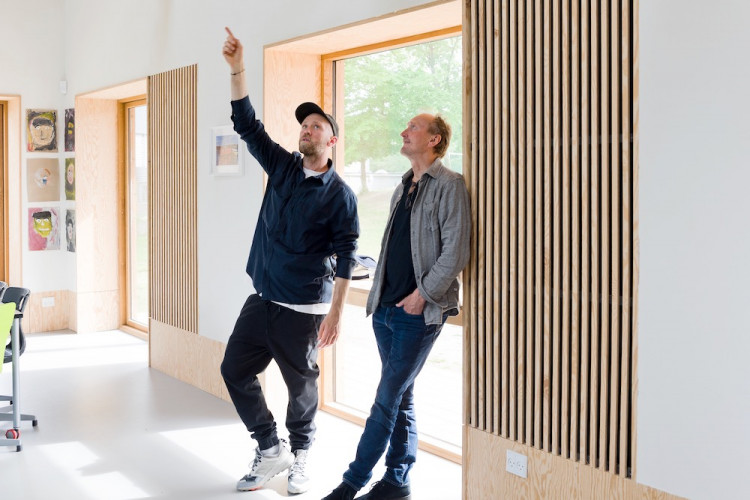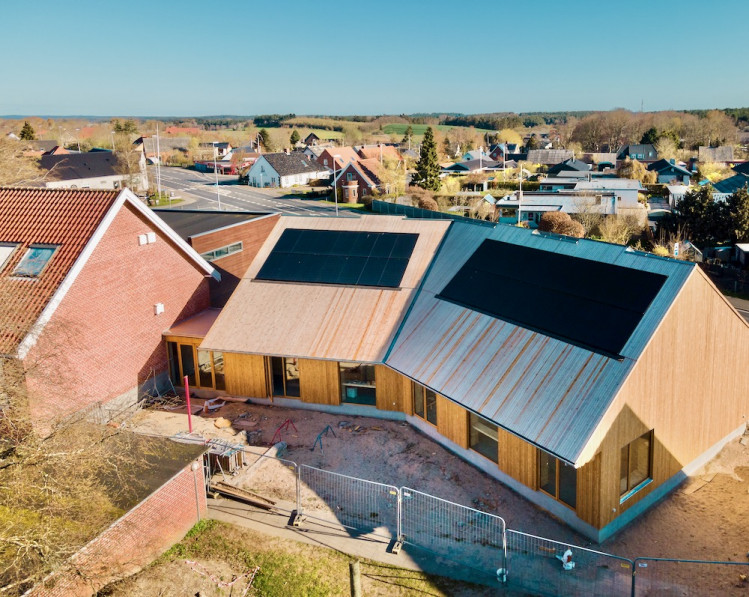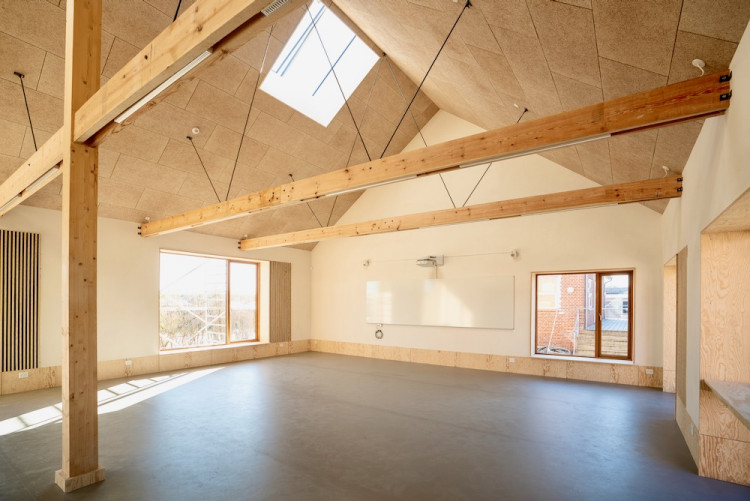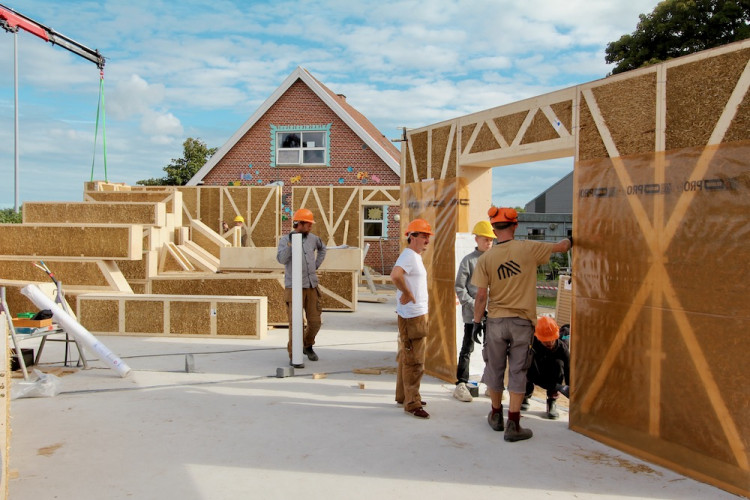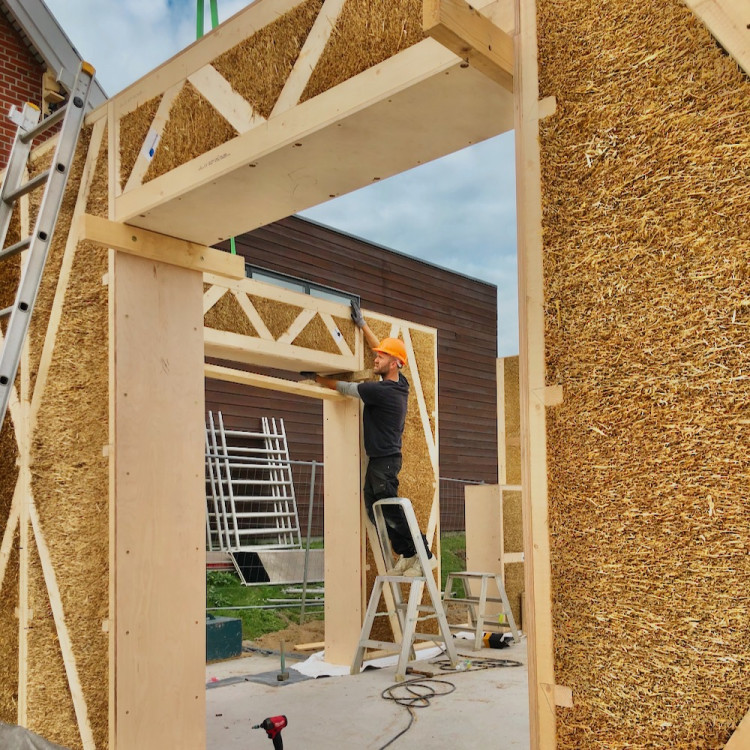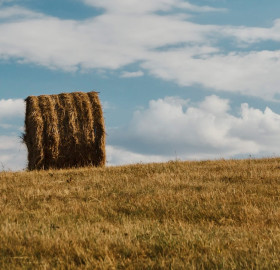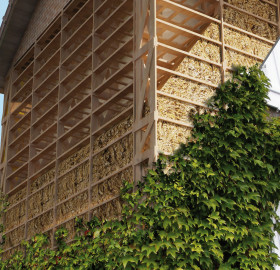While the construction industry is among the top contributors of the world's CO2 emissions, it has shown remarkable resilience to exploring readily available alternatives to building materials that are the culprits. Whether it is convenience or lack of vision, switching to bio-based materials would require a big player in the field to become a trailblazer. Henning Larsen is just that.
The internationally renowned architectural studio has been working with ‘Design with Knowledge’ for more than a decade. While it is celebrated for projects such as the Harpa concert hall in Reykjavík, or Cockle Bay Park in Sydney, one of its smallest projects may yet prove to be of great significance.
The studio partnered with EcoCocon to build a school extension made of straw in Denmark. A testing ground for bio-based materials and their use in the mainstream.
With the success of Feldballe, we got excited about what it might mean for the sector. We sat down with Magnus Reffs Kramhøft, Lead Design Architect at Henning Larsen and the mastermind behind the project.
Henning Larsen is considered very progressive in the world of architecture. How does the studio approach sustainability?
For several years, we have worked with all aspects of sustainability such as microclimate and daylight. We use our knowledge as the design driver for creating better architecture and better cities. In the past decade, it has slowly become clearer for everyone that we need a change in the building industry to lower all carbon emissions. Since building materials alone are responsible for 11% of the global emissions, it’s crucial to seek new ways to do it. One of the possibilities is to explore bio-based materials.
They are a solution proven over centuries. What is holding us back?
It is very hard to integrate these great thoughts material-wise. The contractors and the clients feel it is a risk in a way, and the quite conservative Danish building regulations do not support such development in the business.
We have this Danish expression that it feels like you’re hitting a pillow. You’re trying to hit it with all your strength but the pillow is absorbing all the force. That said, we’re succeeding in many other aspects, and it actually seems like the focus on climate change is pushing the market towards change.
How do you try to raise the bar for sustainability in practice?
Our work in the office is very knowledge-based. We are constantly asking for certifications and EPD’s (Environmental Product Declarations). We ask about the process of production of materials, Life Cycle Assessments and similar questions. The problem for the supplier is that it takes money to get all these certifications, as well as awareness of your own process. But the awareness is evident when striving for better, cleaner, and healthier products.
Another important aspect is to always try and push the boundaries. We are gifted with a wide range of specialists, and we do research projects where we can test things out. But we also try to get the industry on the right track by sharing the knowledge with a kind of an open source mindset.
Can you give an example?
A recent one is our Unboxing Carbon course, where our material specialist Martha Lewis is touring around, teaching other architectural firms about the importance and benefits of choosing the right materials — the ones with low impact and without all sorts of harmful substances.
It makes sense because it’s a jungle out there. I feel an urge to scrape off all these layers, get down to basics, and just use the raw and honest materials.
Are there other barriers?
For developers and contractors, it is often the risk and uncertainty, which quickly increases the total cost and ties us to the things we know. Luckily, we see more and more aware suppliers with better products ready for the conventional market. Products that seem fairly easy to implement and use, instead of what we are used to. Along with certifications and correct data, it suddenly becomes more realistic to find solutions and convince the client or the contractor.
We succeeded in many aspects with the Feldballe Free School project and keep trying to push forward. Be it straw, wood fibre, clay or something else.
What about the financial aspect?
Of course, that’s also part of the problem. I built my own house 10 years ago and had to make stupid decisions because I couldn’t afford to do it the right way. I feel sad about it, but that’s the reality. I would love there to be a more equal pricing of products or heavier taxing of the harmful ones. Large producers can always produce just a little cheaper and that’s an ongoing problem that needs to be solved the political way. On a state level, we need the big players to contribute more to climate solutions.
Whose idea was it to work with straw wall elements? And how come such an important player as Henning Larsen agreed to work on a small provincial project such as Feldballe Free School?
The Feldballe project was born out of curiosity and courage. It might seem small and humble, but it’s a building with great importance for our office and for the business in general, I believe.
I met Lars Keller from EcoCocon Denmark seven years ago at a conference, and I was quickly convinced. Together with a few visionary colleagues, I saw that the office could gain a lot from this. Obviously, not in financial terms, but in terms of knowledge and experience that could be used in larger projects in the future. It often starts on a small scale. We need a place to get our hands dirty, and from there it can take off and become an integrated part of our normal processes.
I did the actual project with my good colleague Peter Tegner Matz, who not only made it possible, but worked out all the detailing and Design for Disassembly principles as well. We also had great support from other very skilled people and specialists in the office. The fact they too saw the potential and invested in this opportunity makes me proud of the Henning Larsen office.
How did you find working with EcoCocon straw panels along with the concept?
The process of sketching the overall project was straightforward. We did not experience any limitations in terms of design, though we, as always, had certain design constraints around span and thickness. But that is just a parameter we work with like with any other product. That’s the beauty of architecture — to balance, to form, and to work with the properties of a material.
We tried to push the envelope with all building elements to see how far we could come with the bio-based concept. We wanted to achieve a healthier indoor climate for the kids by using clay and natural ventilation, but also to implement the ‘Design for disassembly’ principle, so that the building parts and materials can be used again in other places in the future.
Through our process with this straw building, we haven’t found a better alternative material for external walls when it comes to sustainability. It’s a circular product made from leftovers from the agricultural industry. It embodies carbon in a quickly renewable natural material and meets all regulations.
You personally expressed an interest in using straw. Was Feldballe in a way a pilot study?
It’s definitely the first test. We are looking for new projects where we have the opportunity to use straw on a larger scale with more floors and square metres.
We have a lot of beautiful and clever sustainable projects in various parameters designed at the office, but regarding materials, the Feldballe school is the lead. We would like to implement that significant and radical mindset in other projects.
Are there other sustainable practices or ideas which should be foremost in the minds of architects, especially as we look to the future?
With a focus on materials, the headline would be to limit our use of materials and resources along with a circular mindset — reusing what is already produced and used. That could be through a greater focus on reuse of existing building structures or using products made from recycled materials. But also simply by using more basic and clean materials with fewer harmful substances.
We should cut down on the amount of layers we work with in buildings. This could improve the financial aspect by saving money and workload.
When we talk about using straw, we say this is one opportunity. Just one tool in the belt. We don’t have to go with a single solution, that would be naive. We need to broaden it out, study, and test, so we have a palette that meets the climate demands. It’s an important aspect.
And finally, we need to be aware of what we work with. It’s important to keep it simple and choose natural materials, but also be curious and embrace new possibilities that can help lower our carbon footprint. Testing things out, balancing on the thin line, and becoming wiser and more knowledgeable is super important so we can push the boundaries that block us.
Magnus Reffs Kramhøft
Magnus Reffs Kramhøft is Lead Design Architect at Henning Larsen and a dedicated seeker of new solutions. He works to push the boundaries in the building industry to meet the goals for limiting the future effects of climate change. He strives for a more honest, simple and value based ruleset in the projects he works with, and to see that mindset as an integrated part of the architectural quality.
Photos: Henning Larsen, Lindskov Communication

